Greek national costume
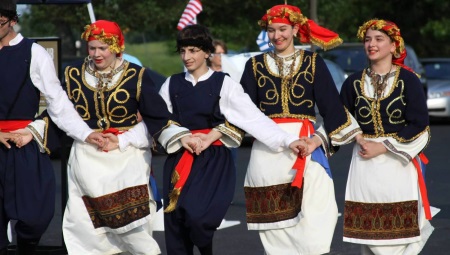
Ancient Greek culture was the first in the history of world civilization to affirm the beauty and harmony of the human body and his spirit. It was in Hellas, a country located on the shores of the warm Aegean Sea, that the style that was later called classical was born, the material, spiritual and aesthetic foundations of the development of almost all European peoples were laid.
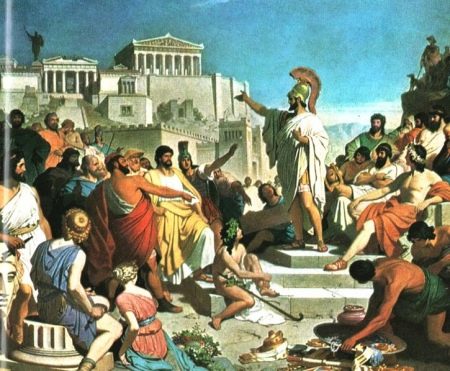
Having achieved great success in various spheres of culture, the ancient Greeks also succeeded in the art of dress: they were the first to come to the idea that a person in his splendor is like God, and his body is a mirror that reflects the ideals of the universe.

Clothes harmoniously fit natural lines, emphasizing impeccable posture, athletic figure, plastic movements, and the Greek style has become a classic style in the history of fashion.

Initially, the national Greek costume was distinguished by its simplicity and elegance at the same time. Even the attire of the gods and goddesses depicted in engravings and statues does not shine with luxury and wealth. There are five distinctive characteristics of the ancient Greek costume: validity, harmony, coherence, stability, timeliness.
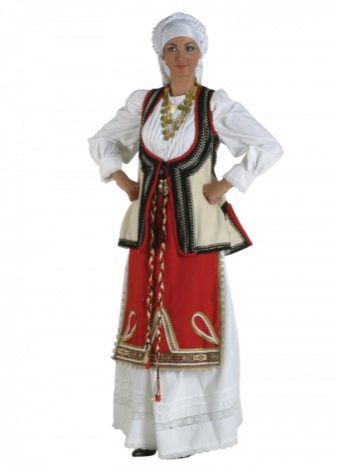
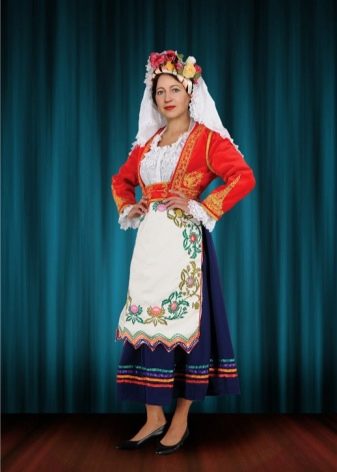
In ancient Greece, the main elements of the national costume were: chiton (underwear) and himation (a cape, which is a rectangular piece of fabric that was skillfully draped, trying to emphasize the unity of clothing with the body). The art of making the fabric flow through the body, enveloping the bulges or enveloping the muscular figure, in price and by recognition was higher than the cost of fabric and the elegance of the ornament.
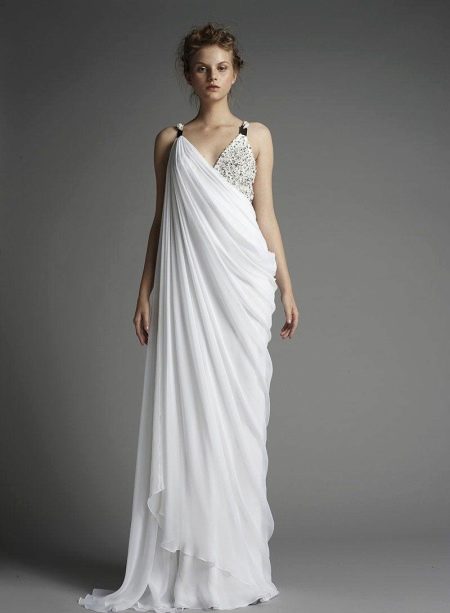
Years passed, changing the system, people, interests, attachments. The costume also underwent some changes: fabrics, decoration, accessories, ornaments became more intricate and sophisticated.
The manufacturing method remained unchanged: the fabric for the suit was not cut and practically not sewn.
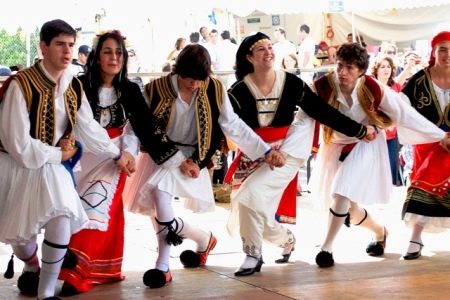
The drapery, brought by the Greeks over the years to perfection in the art of emphasizing the dignity of the body and hiding its flaws, still gave chic and charm to the clothes.
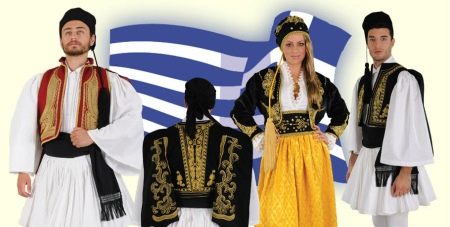
The adoption of Christianity by Greece affected not only the spiritual life of the population, but also influenced the national dress. Outfits began to cover most of the body, hats became fashionable.

But it should be noted that the modern Greek style implies an outfit precisely from ancient times, when people worshiped the divine inhabitants of Olympus and tried to dress in their image and likeness.
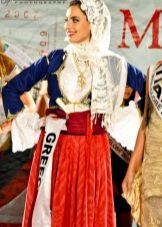
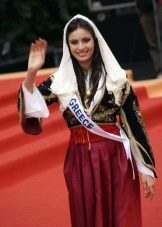


Men's suit
The ancient Hellene dressed in a chiton, which was made of a wide piece of cloth, and fastened on the shoulders with a clasp (fibula). A belt was tied at the waist. The length to the knee was considered average, the youth and warriors shortened this length, the elderly and the priests, on the contrary, lengthened it.
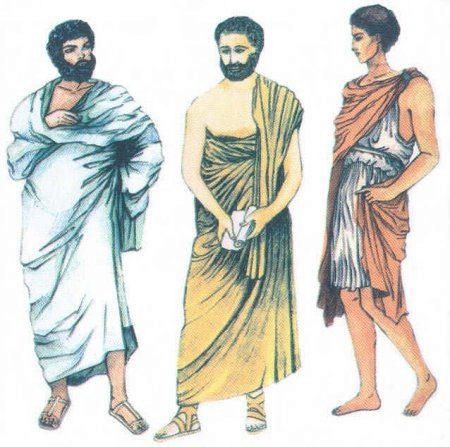
Adults in the same tunic did not go out into the street and did not receive guests, since the tunic was considered an underwear. When leaving the house, a man put on a cape or raincoat. The most famous type of ancient Greek cloak is the himation, made from a rectangular piece of cloth and draped around the body.

Of the other varieties of cloak, chlamyda is known, which was preferred by young men, military men, shepherds and travelers. The difference between the warrior's costume was that military equipment was worn on the tunic, then the mantle was pounced on.

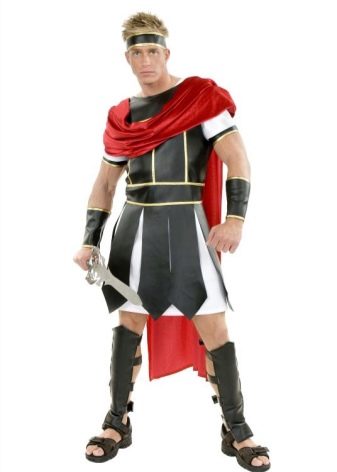
Costumes were divided into everyday and festive. The outfits of representatives of various professions and estates varied.

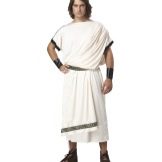
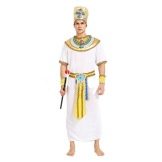
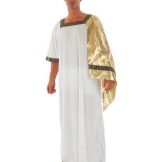
Woman suit
Based on the requirements of morality and ethics of that time, a Greek woman's costume was longer than a man's and covered a significant part of the body. Women's clothing, which also consisted of a chiton and a himation, was much brighter and more colorful. The distinction of the chiton of the classical period - on the upper edge, a lapel was made, the decoration of which was skillful embroidery, intricate ornament, applique made of fabric of a different shade or color.
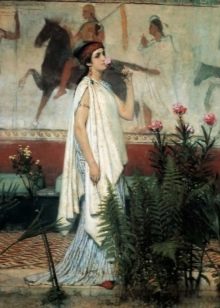
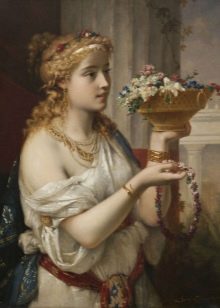
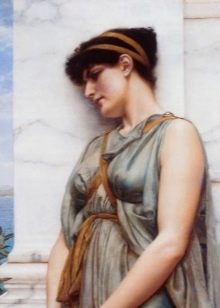
Chitons, made of thin, plastic fabric, were lavishly draped and girded crosswise under the chest and at the waist. Due to their large width, the appearance of a sleeve was created. The female himation was smaller than the male one, however, this was offset by rich ornamentation.
During lavish ceremonies, a peplos was worn, which was distinguished by being longer and wider.

The national costume of a Greek woman consists of an underwear, a shirt with wide sleeves, a long skirt, and an apron. The clothes of women from the poor strata of the population were very similar to the costumes of noble persons, but they were smaller in volume, were made from inexpensive fabric, and were complemented by modest jewelry.
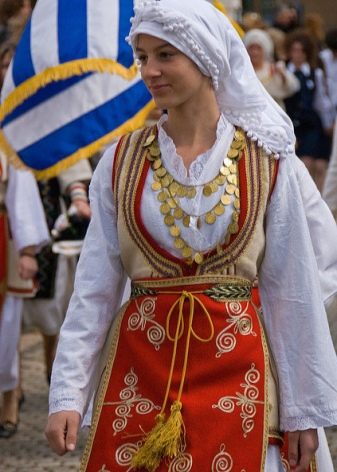
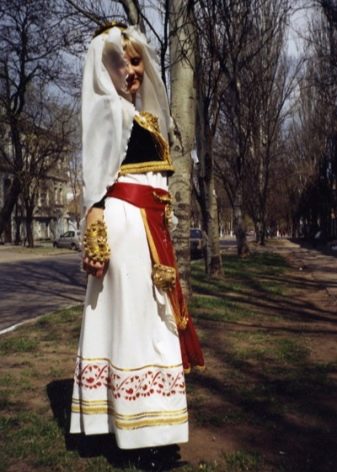
Fabrics: colors, types, design
Spinning and weaving were the main occupations of Greek women. The inhabitants of Ancient Greece wore chitons made of wool and linen. The fabric was made by hand, so it turned out soft and docile, which was extremely important for creating unique drapery touches.
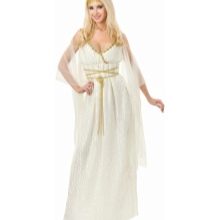
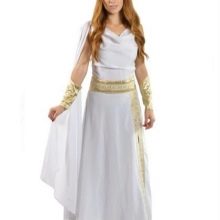

Phoenician and Persian fabrics, as well as Syrian silk and Indian cotton, began to be delivered to Greece later, when Greece began to develop trade relations with other countries. The clothes of the Greeks are becoming more elegant. The dresses of wealthy Greek women are created from delicate, airy fabrics that can create the silhouette of a goddess.

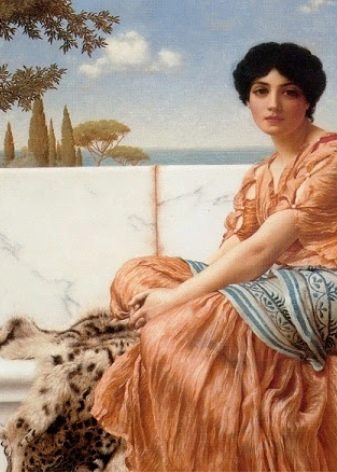
Among the ancient Greeks, the most beautiful and refined color was white, which was considered the color of the gods and the privilege of the aristocracy. Later, white divided the palm with purple. The purple fabric was the most expensive and only military leaders could wear it.
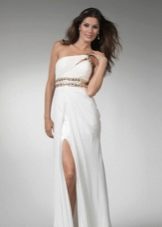
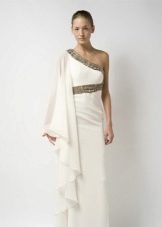
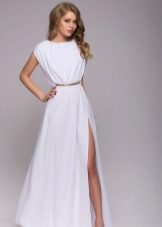

Red and yellow clothes were worn by women. Brown and gray were considered the colors of mourning.
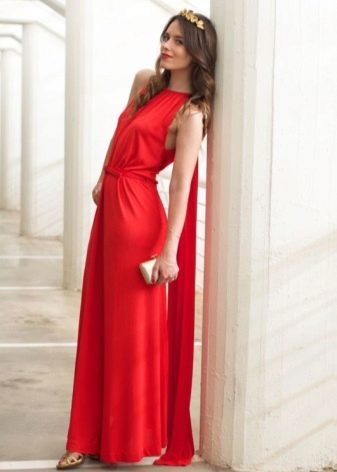

The Greeks did not welcome variegated clothing. A one-color outfit was adorned with skillful embroidery or ornamentation. In costumes of the late period, there is a dark vest and a belt of crimson-red color.

Shoes
In ancient Greece, footwear was a priority for adults. Most of the children ran barefoot. The traditional shoes of the Greeks are sandals, which are flat soles, complemented by numerous narrow straps.
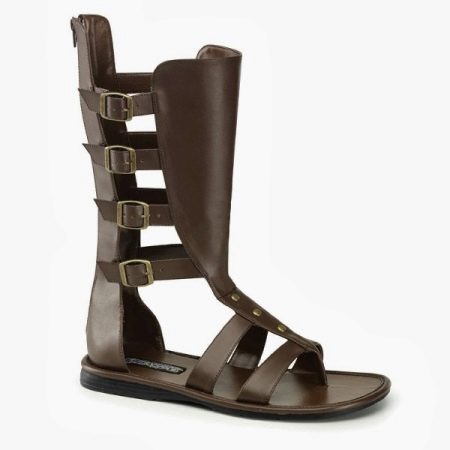
Shoe making was approached seriously and responsibly. The main requirements for shoes were comfort and elegance. Colored leather, gilded straps, metal plaques, silver and pearls served as decoration and decoration.
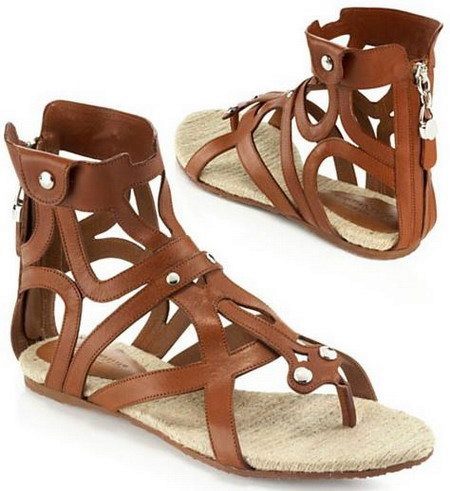
Hats. Hairstyles
The headdress was not popular among the Greeks. When traveling, in bad weather, to work in the field, they put on a petas - a wide-brimmed felt hat tied with long straps.
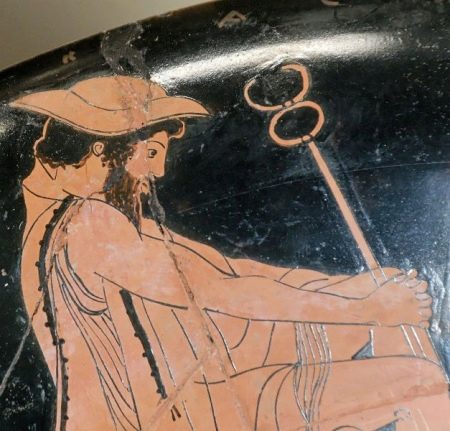
Women were even less in need of this attribute of clothing, since most of the time they were within the walls of their homes. If necessary, they used a scarf, the edge of a cloak, or a light scarf - caliptra.
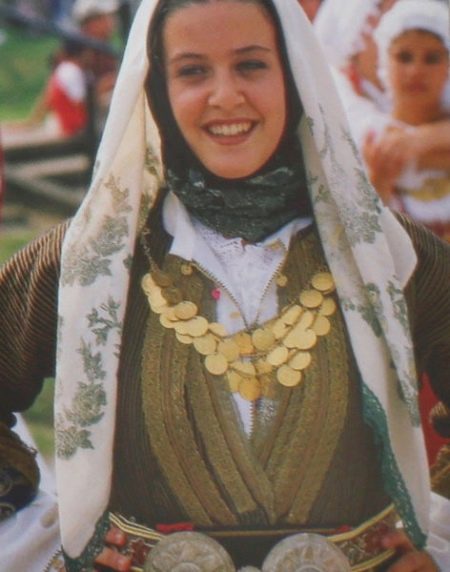
Speaking of headdresses, one cannot fail to mention wreaths. They symbolized merit, title, a sign of respect from fellow citizens, social status and played an important role in the life of the natives of Hellas.
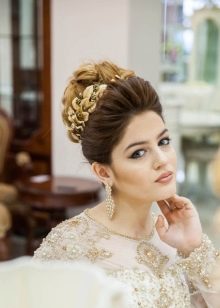

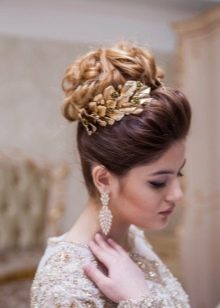
The Greeks paid exclusive attention to the hairstyle that was in harmony with the clothes. Well-groomed short, hair, mustache and a round beard, which served as a symbol of courage - this is the image of a free Hellene. The main female hairstyle was the "Greek knot": hair parted in a parted hair and pulled low on the forehead, it was tied into a knot at the back of the head. The form is simple, but using bandages, tiaras, ribbons, nets, combs, it was possible to create countless variations of it.

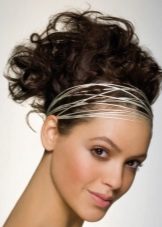


Decorations. Cosmetics
Jewelry craftsmanship in Ancient Greece has reached perfection. Jewelry made of precious metals and stones were mostly women's accessories. Men could only afford a signet, a precious buckle. Graceful rings and bracelets, earrings and necklaces, tiaras and hair nets complemented the outfits and hairstyles of the beautiful half of Hellas. Jewelry was famous for its uniqueness and impeccability.
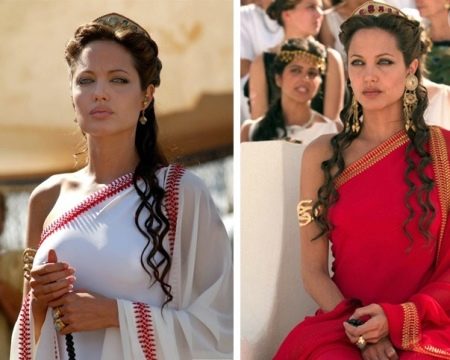
Greek women punctually monitored their appearance. And the next point in achieving the ideal was cosmetics. Antimony, whitewash, blush, eyeliners and eyebrows, perfumes, aromatic oils - everything was used, but very subtly and delicately, because it was only supposed to emphasize the natural beauty, and not cross it out.

The harmony of bodily and mental perfection is the main condition for human beauty. This aesthetic standard of ancient Greek culture is the reason that the Greek style has always been and always will be at the top of the Olympus of Fashion.

Modern Greek style
Today, a suit in the Greek style is not only a part of the country's history, but also inspires fashion designers and designers around the world to create new creations of modern fashion art.
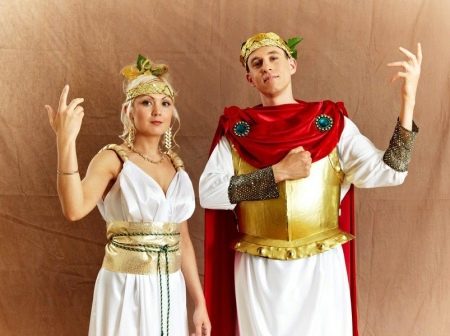
The desire for the foundations of the antique style, based on lightness, grace, harmony and plasticity, attracts more and more fashionistas who want to dress in the clothes of Olympic goddesses into the ranks of Greek style fans.

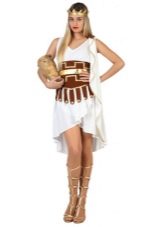
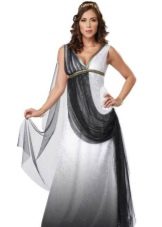
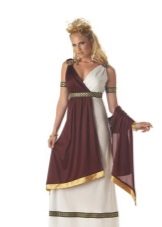
The classic basis in its modern presentation allows you to put on such an outfit at a corporate party or soire, at a graduation or wedding. This style will suit a teenage girl who is going to a theme party or a school ball.


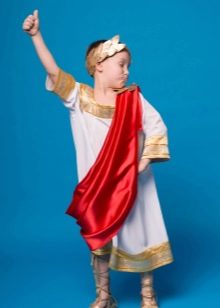
If you are invited to a party in the Greek style, then you can create an interesting and unusual costume yourself.

To make a traditional toga, you will need a large piece of white fabric. If not, take a sheet. Tie the corners of the cut with a knot or secure with pins, brooches. The base is ready.
You can wear a long shirt or a T-shirt and petticoat under it. Accessories, hairstyle, shoes depend on your imagination. Weave a ribbon into your hair, make a wreath, put on a beautiful belt, big earrings, bracelets. The main thing is in moderation and taste.After all, the Greek style is the choice of sophisticated and refined persons.
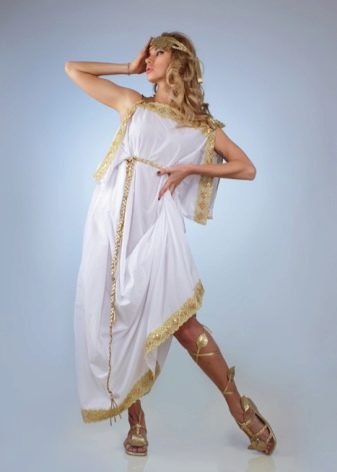
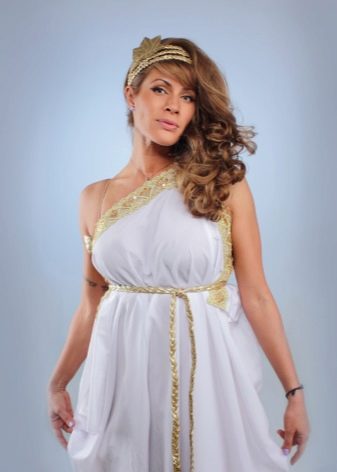









Transformer is super!